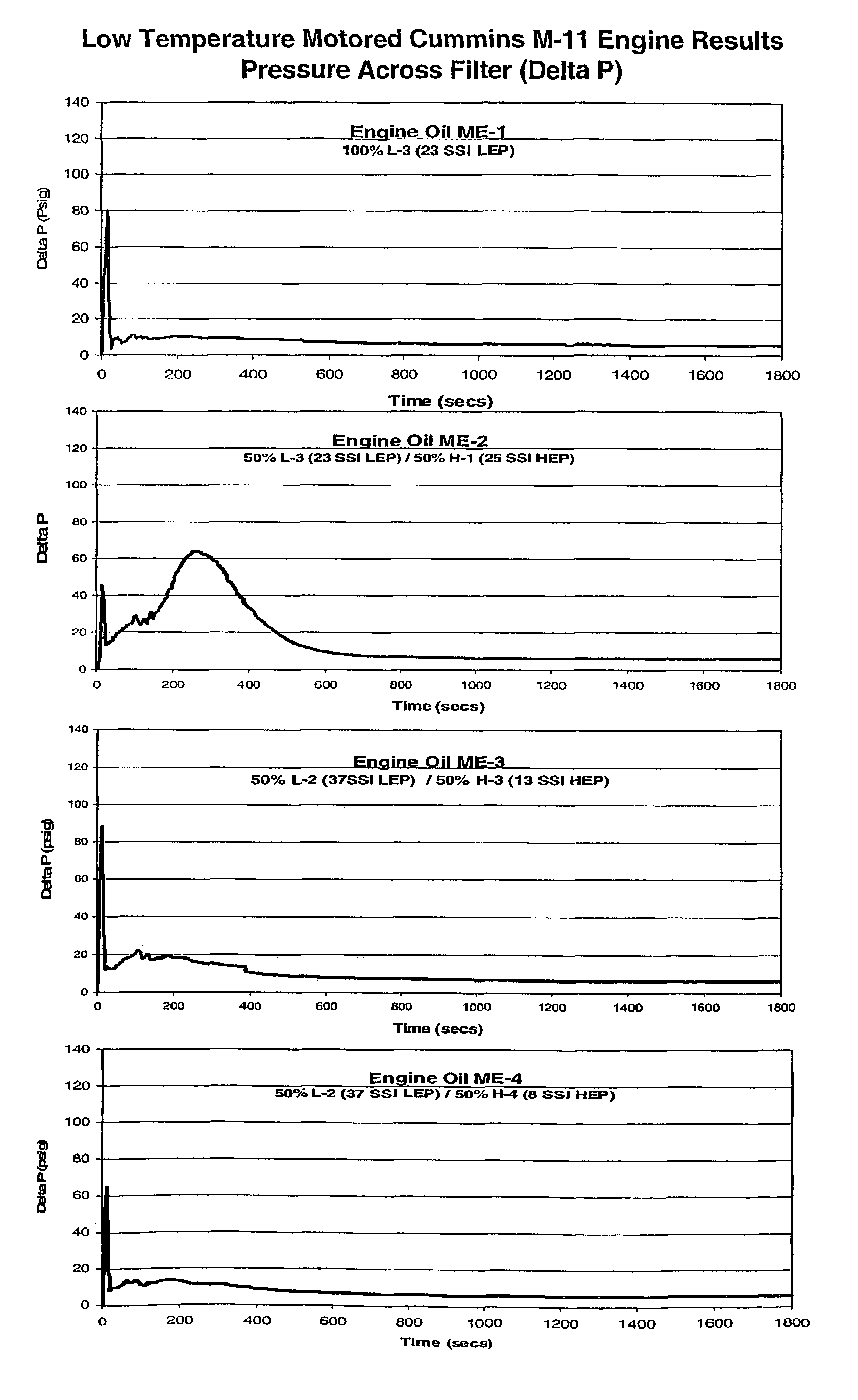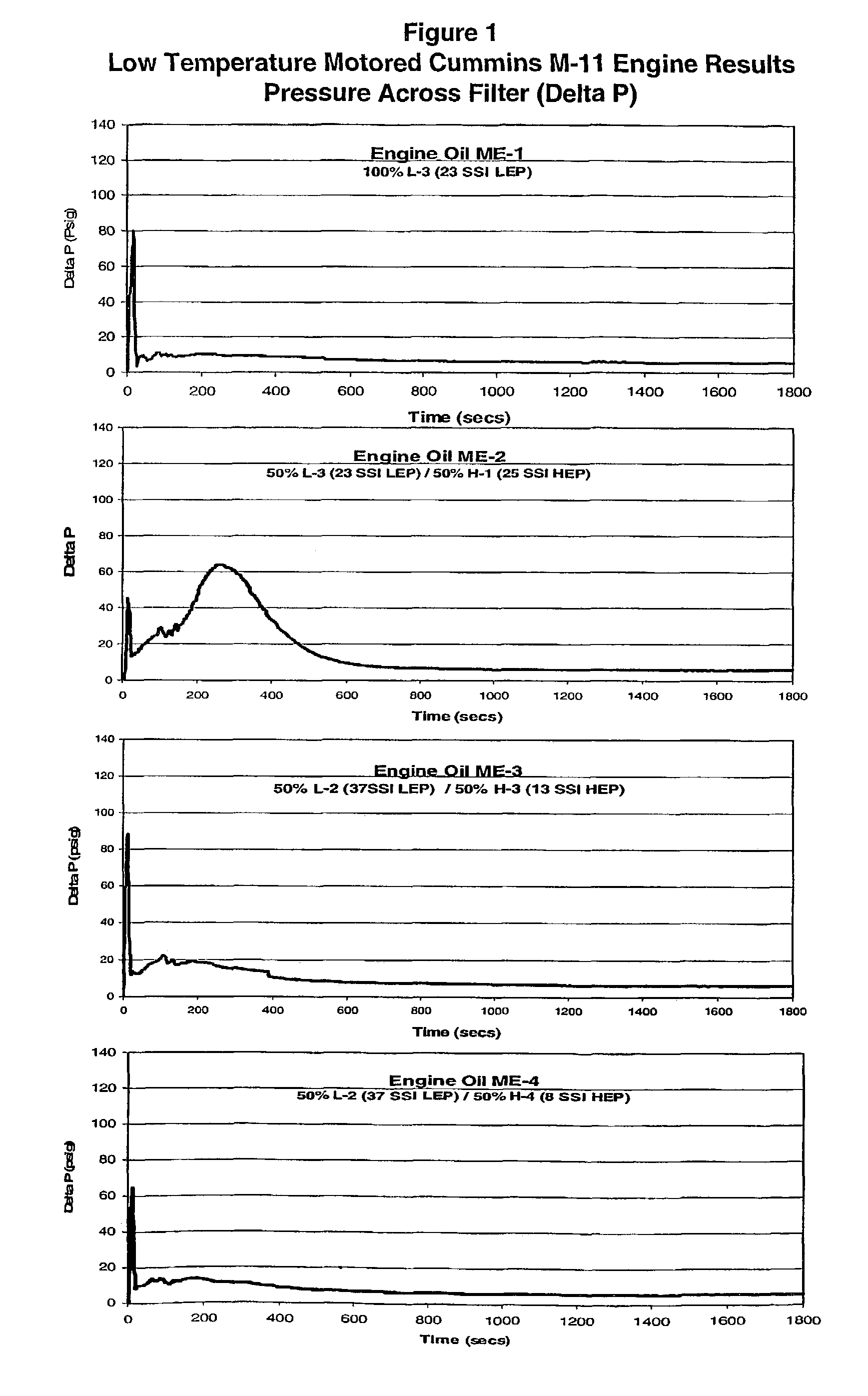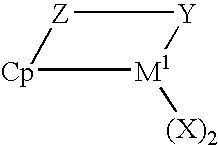Viscosity improver compositions providing improved low temperature characteristics to lubricating oils
a technology of viscosity improver and composition, which is applied in the direction of detergent compounding agent, other chemical processes, fuels, etc., can solve the problems of unsuitable lubricant use, poor viscosity, and poor thickening efficiency of polymeric compositions, and achieve good thickening efficiency and shear stability. good, the effect of good viscosity
- Summary
- Abstract
- Description
- Claims
- Application Information
AI Technical Summary
Benefits of technology
Problems solved by technology
Method used
Image
Examples
example 1
[0117]In this and the next example, ethylene propylene copolymers containing low and high ethylene, with characteristics shown in Table 1 are prepared using conventional Ziegler Natta catalysts. Polymers L-1 through L-3 are low ethylene polymers (LEP) of various molecular weight with crystallinity below 5%. Polymers H-1 through H-4 are high ethylene polymers (HEP) of various molecular weight with crystallinity greater than 20%.
[0118]
TABLE 1Crystal-Wt-%DensityMwMnSSITmlinityPolymerEthylene(Kg / m3)x10−3x10−3(%)(° C.)(%)L-15085329015049−360L-25485320010037−393L-3548531306923−393H-17586718298253821H-27586813072183923H-37586610057133622H-475867884783822
[0119]In this example, four concentrates, containing blends of various polymers shown in Table 1 are first made by dissolving them in 150N mineral oil at 120-130° C. Their compositions are shown in Table 2. Concentrate C-1 contains 100% of the 23 SSI LEP (L-3), with Mw of 130,000 and Mn of 69,000. Concentrate C-2 is a 50 / 50(wt) blend of the...
example 2
[0130]In this example, four additional concentrates, C-5 through C-8, with compositions shown in Table 5, are prepared. Concentrate C-5 contains 100% of the 37 SSI LEP (L-2), with Mw of 200,000 and Mn of 100,000. Concentrate C-6 is a 50 / 50(wt) blend of 49 SSI LEP (L-1) and 18 SSI HEP (H-2). Concentrate C-7 is a 50 / 50(wt) blend of 49 SSI LEP (L-1) and 13 SSI HEP (H-3) while Concentrate C-8 is a 50 / 50(wt) blend of 49 SSI LEP (L-1) polymer and 8 SSI HEP (H-4).
[0131]The concentrates in Table 5 are used to prepare engine oil blends with mineral oil as well as PAO and synthetic ester base oils. Table 6 shows the mineral oil blends, ME-5 through ME-8, containing concentrates C-5 through C-8 respectively. Table 7 shows the corresponding synthetic base oil formulations, SE-5 through SE-8, also containing the concentrates, C-5 through C-8 respectively. The results of evaluation of several low temperature properties of these engine oil blends are also shown in Tables 6 and 7.
[0132]
TABLE 5Polym...
PUM
| Property | Measurement | Unit |
|---|---|---|
| Tm | aaaaa | aaaaa |
| degree of crystallinity | aaaaa | aaaaa |
| degree of crystallinity | aaaaa | aaaaa |
Abstract
Description
Claims
Application Information
 Login to View More
Login to View More - R&D
- Intellectual Property
- Life Sciences
- Materials
- Tech Scout
- Unparalleled Data Quality
- Higher Quality Content
- 60% Fewer Hallucinations
Browse by: Latest US Patents, China's latest patents, Technical Efficacy Thesaurus, Application Domain, Technology Topic, Popular Technical Reports.
© 2025 PatSnap. All rights reserved.Legal|Privacy policy|Modern Slavery Act Transparency Statement|Sitemap|About US| Contact US: help@patsnap.com



